#Vinegar Hill
Explore tagged Tumblr posts
Text





















Brooklyn Neighborhoods: 1/2
template: blinkies.cafe
#brooklyn#nyc#blinkies#flashing lights#nyc web graphics#gif warning#150x20px#3x7#pulsing lights#crown heights#flatbush#prospect park#Kensington#brownsville#canarsie#east new york#Bedford Stuyvesant#bushwick#greenpoint#williamsburg#brooklyn heights#Brooklyn navy yard#cadman plaza#clinton hill#downtown Brooklyn#dumbo#fort greene#prospect heights#vinegar hill#south Brooklyn
15 notes
·
View notes
Text
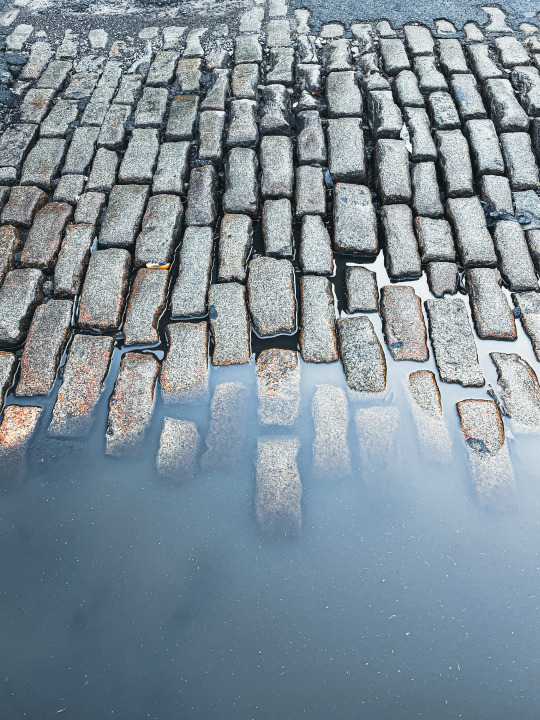
belgian paving blocks and standing water // out for a walk
2023-12-09
5 notes
·
View notes
Text
[Vinegar Hill][Colm Tóibín]
Vinegar Hill di Colm Tóibín esplora identità, politica e amore queer. La sua visionarietà raggiunge il pubblico italiano, offrendo un'esperienza unica.
Colm Tóibín debutta nella poesia con Vinegar Hill: un viaggio tra identità e politica Titolo: Vinegar HillScritto da: Colm TóibínTitolo originale: Vinegar HillTradotto da: Giorgia Sensi e Philip MorreEdito da: Interno Poesia EditoreAnno: 2024Pagine: 316ISBN: 9791281315228 La sinossi di Vinegar Hill di Colm Tóibín Le lettrici e i lettori dei romanzi di Colm Tóibín, tra i quali Brooklyn, Il…
#2024#Colm Tóibín#gay#Giorgia Sensi#identità#Interno Poesia Editore#Irlanda#LGBT#LGBTQ#libri gay#Philip Morre#poesia#poetry#politica#queer#Vinegar Hill
1 note
·
View note
Text
REBELLION RISING ON THE RISE: 2009-2018
THE FRANCE AND IRISH LINK TO THE REBELLION:
THE PARANORMAL HOTSPOT IN ROUSE HILL REGIONAL PARK
THE REAL CENTER OF THE CIVIL WAR OF THE REBELLION OF VINEGAR HILL PART 1:
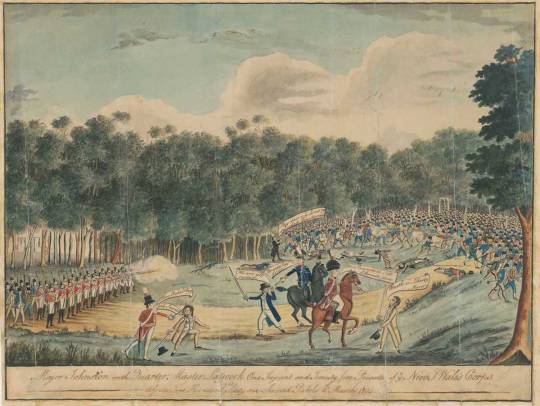
My hypothesis is there is a link to the slave revolts in Haiti and the Battle of Vinegar ill where the Irish slaves attempted to overthrow their English captors.
This is founded by my initiation into haitian voodoo, 21 divisions creole spiritism which combines with my cereominal magician tradition starting HARDCORE at the same site (the battle site of vinegar hill) back in 2009.
All events were extreme paranormal and unexplained anomalous events, experienced by a friend and I who were yet to be formally initiated into ceremonial magick or vodou.
A magical portal was opened which took me until 2018 to close
many ufo and other supernatural events took place at this site
which can be ascribed to the closest site to the only civil war in Australia has ever witnessed.

My notes on the historical context from 2022
1789
After 1789, some Volunteer units showed their sympathy with the French Revolution by holding parades on 14 July to commemorate the fall of the Bastille. In 1792, Grattan succeeded in carrying an Act conferring the franchise on the Roman Catholics; in 1794, he introduced a reform bill that was even less democratic than Flood’s bill of 1783.
He was as anxious as Flood had been to retain the legislative power in the hands of men of property, for he had a strong conviction that while Ireland could best be governed by Irish hands, democracy in Ireland would inevitably turn to plunder and anarchy. The defeat of Grattan’s mild proposals helped to promote more extreme opinions. However, as soon as the Jacobin regime assumed power in France, radical Patriots became more reluctant to refer to France as a prime example of Catholic political action for the causes of liberty and justice. Nevertheless, one of the main inconsistencies on the Patriot political agenda by calling for increasing powers of the Irish parliament while maintaining the selective as opposed to universal suffrage seemed to have been dissolved.
However, the French Revolution also had a second, contrasting, effect. Conservative loyalists such as John Foster, John Fitzgibbon and John Beresford, however, remained opposed to further concessions to Catholics and, led by the ‘Junta’, argued that the ‘Protestant Interest’ could only be secured by maintaining the connection with Britain. In reactionary circles, it was used to emphasise the point that an open political debate without censorship as well as parliamentary reform could entail a severe blow to their special interests, and could be tantamount to inviting Radicals to overturn the political structure of the country, rather than just appeasing them. In particular, the French Revolution prompted relentless action against the radical wing of the Patriot movement, the United Irishmen that included many former Whigs. It also prevented more moderate Patriots from supporting some radical Patriot activities without reservation, depriving the Patriot movement of solidarity and unity.
1688-91
WILLIAMITE WAR
William of Orange - dutch born
William of Orange, the Dutch prince who became King of England, Scotland, and Ireland in the Glorious Revolution of 1688
Defeated catholic "james 2nd" in wiliamite-jacobite war.
Protestant ascendancy
THE DECLATORY ACT OF 1719
Loss of Independence due to the House of British Lords being able to pass laws in Ireland
Restrictions of commerce at the expense of ireland that favoured Britain were tipping this rise to the protestant ascendancy for GREATER freedoms from great britain.
ORANGE ORDER:
The basis of the modern Orange Order is the promotion and propagation of "biblical Protestantism" and the principles of the Reformation. As such the Order only accepts those who confess a belief in a Protestant religion.
As well as Catholics, non-creedal and non-Trinitarian Christians are also banned.
This includes members of The Church of Jesus Christ of Latter-day Saints(Mormons), Jehovah's Witnesses, Unitarians, and some branches of Quakers.
Previous rules specifically forbade Roman Catholics and their close relatives from joining
but the current rules use the wording "non-reformed faith" instead. Converts to Protestantism can join by appealing to Grand Lodge.
James Wilson and James Sloan, who issued the warrants for the first Lodges of the Orange Order along with 'Diamond' Dan Winter, were Freemasons,[26] and in the 19th century many Irish Republicans regarded the Orange Order as a front groupestablished by Unionist Masons as a more violent and jingoist vehicle for the promotion of Unionism.[71] Some anti-Masonic evangelical Christian groups have claimed that the Orange Order is still influenced by freemasonry.[72] Many Masonic traditions survive, such as the organisation of the Order into lodges. The Order has a similar system of degrees through which new members advance. These degrees are interactive plays with references to the Bible. There is particular concern over the ritualism of higher degrees such as the Royal Arch Purple and the Royal Black Institutions
1795: the battle of richmond hill
Darug natives defend the land from british invaders
North richmond - pitt town wetlands.
1798
The first battle of vinegar hill
County wicklow
The catholics invasion and claim to the irish land and protestant ascendancy
Act of union 1800- rise to catholic invasion that allowed the mobilisation of the catholic poplation
Uniteed the british parliament and irish parliement in unity, to form a united front
Catholic resentment in leinster
1789
THE AFRO-CARIBBEAN LINK
UNITED IRISH PRISONER
JAMAICA
WEST INDIES
NEW FOUNDLAND
NEW SOUTH WALES
"United Irish" mutinies in Jamaica, Newfoundland and New South Wales
In October 1799 Castlereagh received reports from Jamaica that many (of the 3,200)
United Irish prisoners, "incautiously drafted" into regiments for service in the West Indies, had taken to the hills to fight alongside the Maroons and with the French: "as soon as they got arms into their hands they deserted".
There is no suggestion that this was part of any trans-Atlantic design of the United directory in Dublin or Paris.
The same is true of the "United Irish Uprising in Newfoundland" in April 1800. Two-thirds of the colony's main settlement, St. John's, were Irish, as were most of the island's locally-recruited British garrison. There were reports that upwards of 400 men had taken a United Irish oath, and that eighty were resolved to kill their officers and seize their Protestant governors at Sunday service. As in Jamaica, the mutiny (for which 8 were hanged) may have been less a United Irish plot, than an act of desperation in the face of brutal living conditions and officer tyranny.
Yet the Newfoundland Irish would have been aware of the agitation in the homeland for civil equality and political rights.
There were reports of communication with United men in Ireland from before '98 rebellion;of Thomas Paine's pamphlets circulating in St John's;and, despite the war with France, of hundreds of young Waterford men still making a seasonal migration to the island fisheries, among them defeated rebels who are said to have "added fuel to the fire" of local grievance.
In March 1804, stirred by news of Emmet's rising, several hundred United Irish convicts in New South Wales tried to seize control of the penal colony and to capture ships for a return to Ireland.[204] Poorly armed, and with their leader Philip Cunningham seized under a flag of truce,the main body of insurgents were routed in an encounter loyalists celebrated as the Second Battle of Vinegar Hill.
The 1803 Michael Dwyer, who was a captain of the irish rebellion of 1798, transported to NEW SOUTH WALES
-1807 x 2 imprisoned and x2 trials for plotting against the british penal rule in NSW
1804
The second battle of vinegar hill
LIBERTY OR DEATH!
‘Death or Liberty’
The 1804 Castle Hill convict rebellion was led by Philip Cunningham of Moyvane, north County Kerry, a government stonemason who was convicted for his involvement in the 1798 Irish rebellion; he was also involved in a mutiny on board the convict transport ship, the Anne.
He was key figure in the planning of the rebellion, along with his rebel assistants William Johnston and Samuel Humes.[
Accompanied by over 200 frustrated armed Irish convicts, their aim was to capture ships and sail to Ireland. The rebels gathered at Castle Hill, calling on other convicts to join them.
Their intention was to march from Windsor to Parramatta, and then onto Sydney, gathering recruits along the way to attain a ship to bring them back to Ireland.
The Irish rebels were betrayed by an informer Keogh, who told the authorities of the Irish convicts’ plans.
By 1804, most of the Irish leaders of the previous attempts at rebellion had been imprisoned and moved to outlying areas of the colony such as Norfolk Island. Dispersal had worked well for the authorities but with each new rebellion plan, new Irish leaders rose among the convicts more aware of what not to do next time. The leaders of rebellion on 4 March 1804 were Phillip Cunningham and William Johnston.
Cunningham was a veteran of the 1798 conflict in Ireland and the mutiny of the convict transport ship Anne. From his experiences in Ireland and NSW he understood that secrecy and a non-traceable but effective communication were essential to a successful rebellion.
Cunningham’s emphasis on secrecy was so successful that it was not until the day before the rebellion that the authorities knew of its existence.
On the evening of 3 March, one of the Irish convict overseers turned informant. On Sunday 4 March, the day of the rebellion, two more informants came forward and provided names.
John Griffen was one of the informants and had been relaying a message to the pike-maker Bryan Furey that the rebellion was on for Sunday night.
Since Furey did not get the message the areas of Sydney, Parramatta and Windsor did not rebel.
Castle Hill was the only district that rose in rebellion.
Despite this intelligence, the authorities in Parramatta and Sydney did not act immediately and on 4 March 1804, John Cavenah set fire to his hut in Castle Hill at 8.00 pm. This was the signal for the rebellion to begin.
With Cunningham leading, 200 rebels broke into the Government Farm’s buildings, taking firearms, ammunition and other weapons. Initially, there was mayhem as buildings were ransacked to cries of ‘Death or Liberty’. Two English convicts dragged the Hills District flogger, Robert Duggan from under his bed and George Harrington an English convict beat him unconscious. A constable was saved from a musket ball in the face when the musket of John Brannon misfired.
Another constable was saved in similar circumstances when Jonathon Place’s musket also misfired. Cunningham gathered the rebels and reprimanded them for their lack of disciplined behaviour.
The rebels then went from farm to farm on their way to Constitution Hill at Parramatta gathering firearms, supplies and drinking any liquor they found. The looting of farms gave the rebels over 180 swords, muskets and pistols. In 1804, this was close to one third of the colony’s entire armoury
I do therefore proclaim the Districts of Parramatta, Castle Hill, Toongabbie, Prospect, Seven and Baulkham Hills, Hawkesbury and Nepean to be in a STATE of REBELLION; and to establish Martial Law throughout those Districts…
Cunningham’s plan involved burning the MacArthur property of ‘Elizabeth Farm’ in order to draw the Parramatta garrison out of the town.
Once this was done the rebels in Parramatta would rise up and set fire to the town as a signal. The Castle Hill rebels would gather at Constitution Hill and then raid the barracks for more arms and ammunition.
From there the rebels would march to Windsor and join up with the rebels in the Hawkesbury before marching on Sydney. At dawn on 5 March, rebels were still straggling in to Constitution Hill. Phillip Cunningham and William Johnston were busy drilling the rebels on the hill while they were waiting for the signal from the uprising rebels in Parramatta. The signal never came. Cunningham’s messages to the Parramatta and Windsor rebels had not got through. Cunningham decided that the rebels would head down the Hawkesbury Road to Windsor to meet up with the rebels from the Hawkesbury. Had Cunningham effected this, King maintained it would have increased his force by a further hundred rebels.[10]
Colonial paranoia increased once evidence of planned rebellion became evident after 1800 but how real was the threat from Irish convicts?
The Defenders and United Irishmen transported between 1795 and 1806 provided leadership to those convicts, many Irish but including English transportees, who were prepared to take direct action to overthrow the colonial authorities.
Although it was the Irish convicts who were a particular concern to Hunter, King and Bligh, it is important not to over-exaggerate their significance while under-estimating the involvement of convicts of other nationalities. In addition, the Irish convict leadership had considerable experience in planning and implementing rebellious activities.
This explains why successive governors sent leaders or presumed leaders, whether there was concrete evidence of sedition or not, to the more isolated penal settlements on Norfolk Island and VDL. This had the effect of disrupting any planning for insurrection.
Finally, hatred of the British in Ireland was transposed to NSW and this meant that Irish leaders had a willing supply of convicts who were prepared to support their actions.
That support came from non-Irish convicts is a reflection of the punitive and arbitrary nature of convict life. Where they were concentrated in one area, as on the Castle Hill farm, Ireland’s cause helped bind these men together.
However, there were major problems for those seeking rebellion. First, keeping planning secret was a major difficulty and only the Castle Hill revolt in 1804 saw planning converted into action.
Convicts were always willing to ‘split upon each other’ and this allowed the authorities to intervene before matters spiralled out of control.
Secondly, the objectives of rebellion such as the rallying cry of ‘Death or Liberty’ or demands for a ship to go home were idealistic and unrealistic. Although these may have been the aims of rebel leaders, there is little evidence that they were widely held by the rank-and-file, many of whom claimed that they had been forced into rebellion
Thirdly, as in Ireland during the 1798 rebellion, when faced with even inferior military force, the rebels could not translate numerical strength into military victory.
Finally, the hoped for French aid was illusory as it was never part of French strategy and, during the critical period from 1801 to 1804 war in Europe had been suspended.
It was the British government that was constantly afraid of convict rebellion and disorder though this did not stop it from sending political prisoners to NSW despite the concerns of successive governors. For the authorities, a colony composed largely of convicts was inevitably turbulent and rebellious, something reflected in Hunter’s and King’s despatches. In his reports on NSW and VDL, Bigge considered that the best security against rebellion was the higher standard of living that convicts generally enjoyed in NSW than in Britain and the opportunities and rewards open to those with industry and skill. Some convicts ‘bolted’ but only a few rebelled.
Rouse Hill Estate
Vinegar Hill was not a formal location in 1804.
The battle between the rebels and the soldiers became commonly known as the ‘Battle of Vinegar Hill’ after the Irish battle in 1798. Common usage of the name Vinegar Hill began to appear in the 1810s and 1830s in the Rouse Hill area.
But there is no formal Vinegar Hill on a map. There have been competing thoughts for the location of Vinegar Hill.
Originally it was thought to be Rouse Hill, George Mackanass challenged this in the 1950s marking the location of Vinegar Hill as the crossroads between Windsor Road and Schofields Road.
THIS WAS THE LOCATION OF ROUSE HILL REGIONAL PARK, in which my friend and I partook in rituals with an optical crystal ball resulting in FULL BLOWN MANIFESTATIONS.
-1816
Richard rouse
Built tollhouses, turnpikes, estates from Parramatta to Liverpool
On 8 October 1816 Rouse was granted 180 hectares (450 acres) near the site of the Castle Hill convict rebellion; at the suggestion of Macquarie the grant was named Rouse Hill. The actual possession of the land had taken place a few years previously, as the Sydney Gazette had first mentioned Rouse Hill on 27 November 1813, and the homestead was begun soon afterwards. It took a few years to build and was a two-storey, twenty-two room house, which has been occupied by members of the Rouse family ever since.
Old government house & THOMAS MITCHELL ROYAL PEDIGREE ANCESTRAL ASSET
& THE HIDDEN HAND OF PARRAMATTA GOVERNMENT HOUSE AND THE TIMEKEEPERS SOUTHERN HEMISPHERE
this is an actual freemasonic ancestral connection of mine... this links to the rebellion and the colonisation of the country.
The Observatory, erected in 1822 was part of Brisbane's intention to make Parramatta "the Greenwich of the Southern Hemisphere" (DPWS 1997: p. 39).
1828, when Thomas Mitchell began the first trigonometrical survey of New South Wales, his initial meridian was taken from the Parramatta transit instrument in consultation with Dunlop. That survey underpinned mapping in New South Wales until recent times (Rosen 2003: p. 80).
Surveyor Edward Ebbsworth, when conducting his 1887 survey of Parramatta Park, ensured that the exact location of the piers would be preserved by fixing a copper plug in the basal stone of the piers.
Brisbane was accompanied to Australia by two astronomers: Charles Rumker, who had already attained a good reputation as an astronomer and mathematician; and James Dunlop, whose great natural ability in mechanical appliances and instruments saw him identified as a suitable man for second assistant in the Observatory in an out of the way place like Parramatta. On arrival in New South Wales, Brisbane's instruments were immediately set up on piers in the Domain to allow the observation of the solstice on 21 December 1821. B
April 1822, the construction of the observatory had been completed in anticipation of the appearance of Encke's Comet, an event not observable in Europe or at the Cape of Good Hope (Rosen 2003: p. 80).
The observatory was privately funded by Brisbane and consisted of two buildings: an observatory equipped at Brisbane's personal expense; and a residence attached to it. Located about 91 m (100 yards) behind Government House, the observatory was a plain building, 8.5 m (28 feet) square by 3.4 m (11 feet) high, with a flat roof with two domes 3.51 m (11 feet 6 inches) in diameter projecting from it, one at the north and the other at the south.
On the north and south sides were five windows, three of which were in a semi-circular projection from the wall at the base of the domes.
Transit openings in the domes extended to one of the windows to allow observations of the horizon. A 0.41-metre (16 in) Reichenbach repeating circle was located under the north dome and a 1.2-metre (46 in) equatorial Banks telescope was under the south dome.
There was also a Troughton mural circle and a 1.7-metre (5+1⁄2 ft) Troughton transit instrument. A Hardy clock showed sidereal time and a Brequet clock showed mean time.
All instruments were mounted on solid masonry piers.
There was also a Fortin pendulum and two instruments for observing the dip and variation of the magnetic needle.
CONVICT LIES
O’Farrell estimates about 1.5% of these were unambiguously sent out as political offenders or participants in rebellion or conspiracy, with the great bulk of these coming in the aftermath of the 1798 Rebellion.
If crimes of agrarian discontent and social disaffection are included under the heading of ‘political crimes’, then the proportion of Irish political transportees rises to about 20%. The great majority of Irish convicts were, therefore, sent to Australia largely for petty crimes.
Theory to link back to
JOHN DEE AND THE OPTICS OF THE CRYSTAL BALL USED BY THE MONARCHY OF BRITISH CROWN
BASED ON THE PROJECTION INTO THE ASTROLOGICAL, ASTRONOMICAL TRANSITS TO CONQUER VIA USING EDWARD KELLY AS "COURT MAGE" AND THE ENOCHIAN CHESS IN THE GLOBAL CONQUEST
real scrying methods take two or more people in the spiritual court for impact, as per 2009 - 2014 when K and I had adopted the original crystal ball between us resulting in full-blown manifestations, later confirmed by Kardec spiritism sources
my spirits advise me Australia is the prime spot for HAITI 2.0 FOR THE SECOND COMING OF THE SLAVE REVOLT IF THINGS CONTINUE THIS WAY ....
note the date and time and motions of movement
note the present economic, social and political happenstance
note the pestilence that has persistence against the masses who only want freedom and peace
note the objections from the overlords through clauses like agenda 2030, and sustainable development, which are just fancy names for the "new world order". which is just a modern 'human slave agenda" decked out in bureaucratic red tape.
freedom of choice, or be denied all liberty?
look at the manipulation that occurred as a result of COVID-19 and the forced COVID-19 vaccine agenda
when will the next thing that replicates occur, and when will humanity rise against the overlords to object in the most amicable and peaceful or diplomatic way, as clearly, the violence and bloodshed aren't going to work here.
PEACEFUL REBELLION.
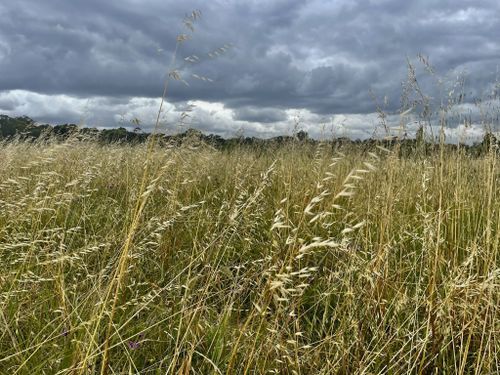

#john dee#crystal ball#vinegar hill#1804#rebellion#the battle of vinegar hill#australian history#haunted australia#paranormal australia#parramatta#john dee and edward kelley#thomas mitchell#rouse hill regional park#supernatural australia#haunted places in australia#ley lines#the rum rebellion#haitian revolt#slave rebellion#irish rebellion#liberty or death#calling down the lwa.#rum rebellion#crystal balls#scrying#spiritism#haitian vodou#ogun#spirts#revolt
1 note
·
View note
Text
Even before Edmund Uhr brought his sheep to the plains in 1835, maps had begun to mark the places Kamilaroi would be slaughtered.
"Killing for Country: A Family History" - David Marr
#book quote#killing for country#david marr#nonfiction#edmund uhr#sheep#plains#corbon comleroy#30s#1830s#19th century#kamilaroi#slaughter#gamilaroi#maps#waterloo creek#gravesend#slaughterhouse creek#vinegar hill#myall creek
0 notes
Text

In my restless dreams...
screenshot redraw~

#don't know what to do?#draw two fandoms in one!#my beloved Diadopp#and the scene that inspired me from the remake of Silent Hill 2#maybe I would also draw such an AU with them idk#my art#silent hill 2 remake#silent hill 2#james sunderland#silent hill 2 mary#mary sunderland#silent hill maria#silent hill#maria sh2#sh2#artists on tumblr#jjba#diadopp#diadop#bossudopi#bosudoppi#diavoloxdoppio#doppio#vinegar doppio#diavolo jjba#diavolo#jjba doppio#jjba part 5#golden wind#golden wind fanart
45 notes
·
View notes
Text




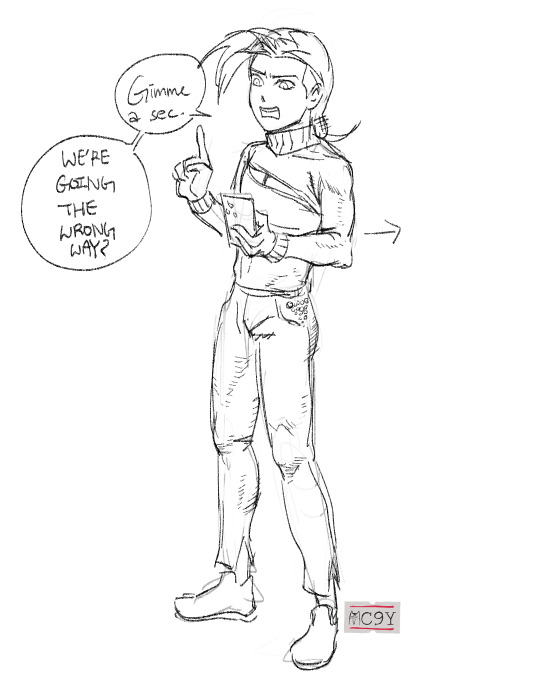
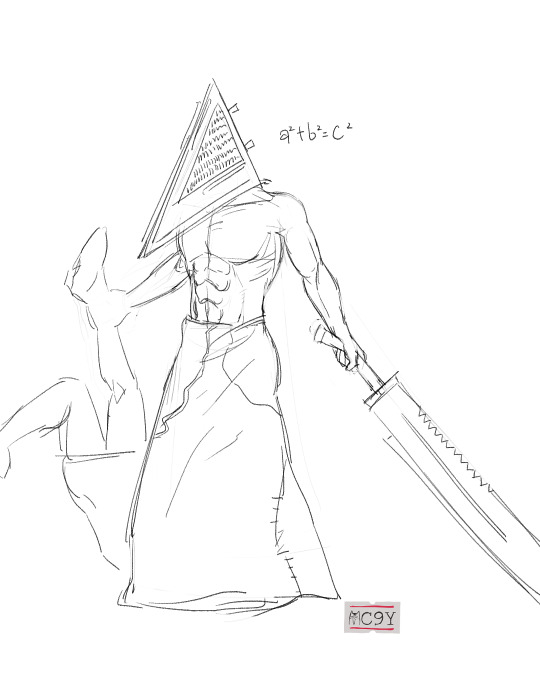
#art#fanart#illustration#drawing#sketch#doodle#jjba#oc#vinegar doppio#golden wind#silent hill#pyramid head#originalcharacter#spiderman 2099#miguel o'hara#tsum tsum#gwen stacy#miles molares#atsv#across the spiderverse#spiderverse
77 notes
·
View notes
Note
Jason, what's your favourite dish of Alfred's? I've heard he's an amazing cook
Sometimes. Sometimes Alfred is a good cook. If Bruce hasn't pissed him off.
Anyways, he makes--or used to make, I wouldn't know, now--this apple pie, but I've never had apple pie like this. He makes the crust, and I don't know what he does with the filling but I swear this thing would bring about world peace.
-Jason
#asks#jason todd#arkhamverse#scaryverse#alfred pennyworth#i will die on the hill that alfred is the muriel bagge of DC: vinegar is his secret ingredient BUT NOBODY EVER GUESSES IT
9 notes
·
View notes
Text
My Favourite Stranger de Depeche Mode
Un clip et une version live de My Favourite Stranger de Depeche Mode. Depeche Mode Memento Mori 2023 Après un Stade de France en 2023, ce sera à Bercy en 2024 puisque Depeche Mode a rajouté des dates à sa tournée. J’espère que ce n’est pas la dernière. Mais j’en profiterai à fond, comme à chaque fois, et cette fois-ci jusqu’à la fin. My Favourite Stranger de Depeche Mode Un semaine après avoir…

View On WordPress
#Anton Corbijn#Anton Corbijn x depeche mode#Depeche Mode#memento mori#memento mori depeche mode#My Favourite Stranger#My Favourite Stranger de Depeche Mode#My Favourite Stranger de Depeche Mode Anton Corbijn#my favourite stranger depeche mode Vinegar Hill Sessions#my favourite stranger Vinegar Hill Sessions#Vinegar Hill Sessions
2 notes
·
View notes
Text


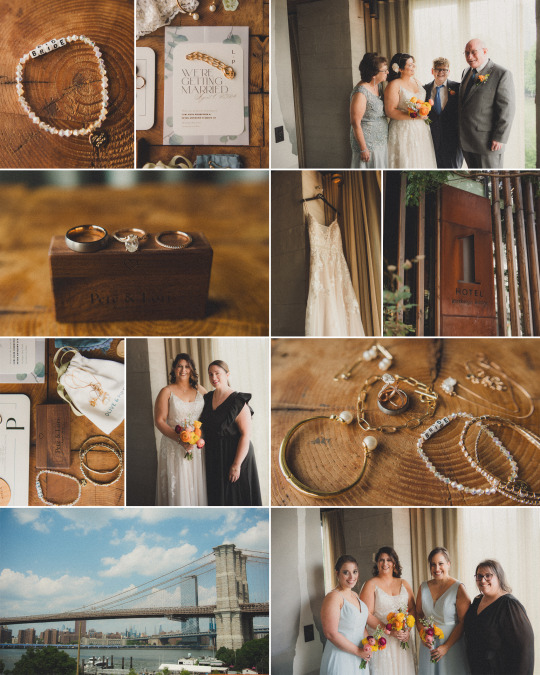
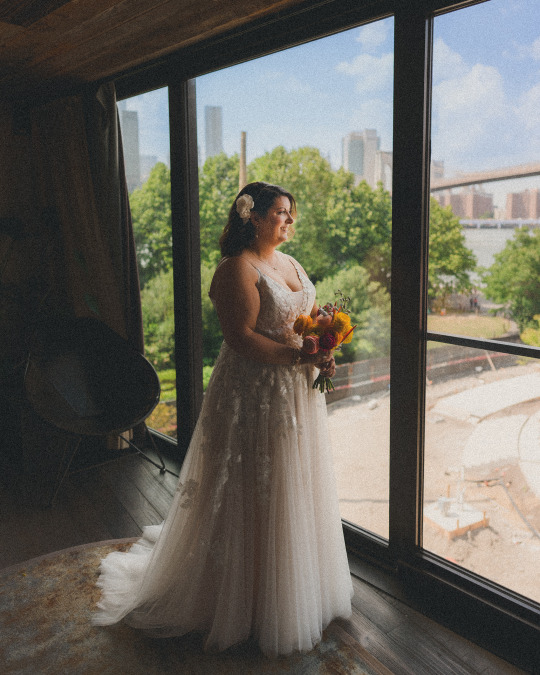

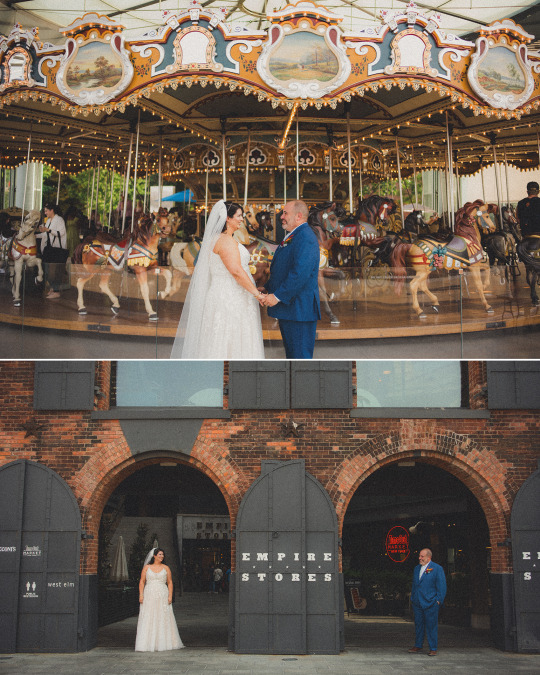
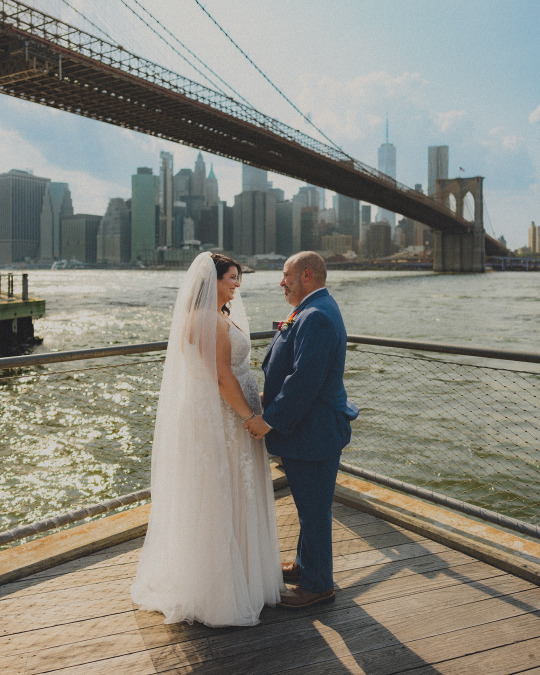
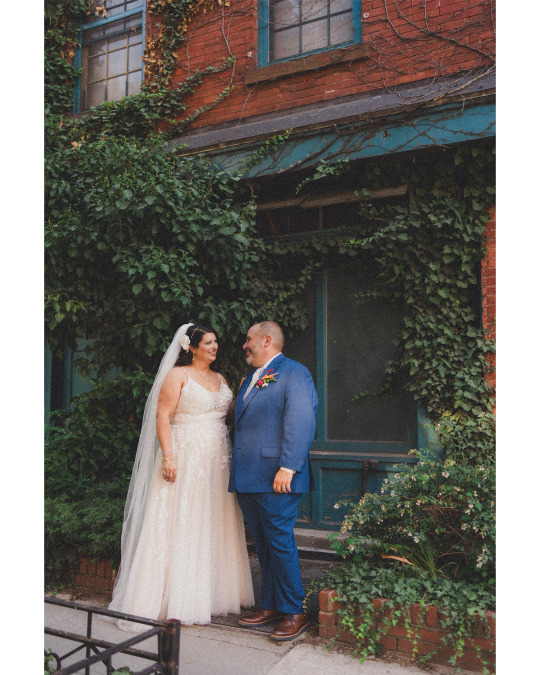


#wedding photography#new york wedding photographer#brooklyn wedding photographer#elopement photographer#vinegar hill house#city wedding
0 notes
Text
10 Foods That Are Bad For Your Teeth: Protect Your Oral Health

Maintaining good oral health goes beyond regular brushing and flossing; it also involves making wise dietary choices. Certain foods can be particularly harmful to your teeth, contributing to decay, erosion, and other dental issues.
Here are ten foods you should be cautious about to keep your smile healthy and bright.
1. Sugary Snacks and Candies
Sugary treats are notorious for their detrimental impact on dental health. Candies, especially sticky or chewy ones, cling to your teeth and provide a perfect breeding ground for bacteria. These bacteria produce acids that erode tooth enamel, leading to cavities. Hard candies are doubly dangerous as they can also crack or chip your teeth.
2. Carbonated Soft Drinks
Sodas are a triple threat to your teeth. They are loaded with sugar, highly acidic, and can dehydrate your mouth. The acid in these drinks wears down tooth enamel, and the sugar feeds harmful bacteria. Even diet sodas, though sugar-free, contain acids that can erode enamel over time.
3. Citrus Fruits
While citrus fruits like oranges, lemons, and grapefruits are healthy and packed with vitamin C, their high acid content can erode tooth enamel. Frequent exposure to these acids can weaken your teeth and make them more susceptible to decay. Drinking water after consuming citrus can help wash away some of the acids.
4. Dried Fruits
Dried fruits like raisins, apricots, and figs are often perceived as healthy snacks, but they are high in concentrated sugars and can be very sticky. This stickiness means they tend to cling to teeth longer than other foods, promoting tooth decay. It’s better to eat fresh fruits instead.
5. White Bread
White bread might seem harmless, but when you chew it, your saliva breaks down the starches into sugar. This sugar can get trapped between teeth, creating an ideal environment for bacteria. Opt for whole grain bread, which contains less added sugar and more fiber.
6. Alcohol
Alcoholic beverages, particularly those high in sugar like sweet cocktails and liqueurs, can harm your teeth. Alcohol causes dehydration and reduces saliva flow, which is essential for washing away food particles and neutralizing acids. Less saliva means a higher risk of decay and gum disease.
7. Ice
Chewing on ice might seem refreshing, but it can cause significant damage to your teeth. Ice is hard and can crack or chip your teeth and damage tooth enamel. It’s best to enjoy ice in your drinks rather than as a snack.
8. Potato Chips
Potato chips are a favorite snack, but they are high in starch. This starch breaks down into sugar, which can get trapped between teeth and feed bacteria. Additionally, chips often leave behind residue that lingers in the mouth, leading to plaque buildup.
9. Coffee and Tea
While coffee and tea are popular beverages, they can stain your teeth over time. Additionally, many people add sugar to their coffee or tea, increasing the risk of tooth decay. Tannins in these drinks also contribute to staining. Rinse your mouth with water after consuming these beverages to minimize their impact.
10. Vinegar-Based Foods
Foods like pickles and other vinegar-based items are highly acidic. Regular consumption can erode tooth enamel, making teeth more susceptible to decay. If you enjoy these foods, try to rinse your mouth with water afterward to help neutralize the acids.
Conclusion
Being mindful of the foods you eat is crucial for maintaining good oral health. While you don’t need to completely eliminate these items from your diet, it’s important to consume them in moderation and take steps to protect your teeth.
Drinking water, maintaining a balanced diet, and practicing good oral hygiene can help counteract the negative effects of these foods. By making informed choices, you can enjoy a healthy smile for years to come.
Ready to enhance your dental health? Visit Capture life dental care to explore our comprehensive range of services and schedule your appointment today!
#alcohol#Banjara Hills Dentist#Best Dental Care Clinic#Best Dental Care Clinic Hyderabad#Best Dentist in Hyderabad#Capture Life Dental Care#carbonated drinks#citrus fruits#coffee and tea#Dental Care In Banjara Hills#Dental Clinic in Hyderabad#Dental Health#Dentist Hyderabad#Dentist Near Me#dried fruits#harmful foods#ice#Oral Hygiene#potato chips#sugary snacks#Tooth Decay#vinegar-based foods#white bread
0 notes
Text
When deciding who to work for there is a sliding scale of employers that goes from lil mom and pop shops up to corporate monoliths. I have worked at both ends of the spectrum and I can pretty definitively say that tiny businesses are hands down the most insane employers.
The sweet spot is a place that has like 10-20 stores; that’s the best possible work environment. They’ll be polished enough to have protocols that make work structured, but not so bogged down with bureaucracy that nothing can ever get done.
This story is not from that sweet spot. This story is from my time working at Oil and Vinegar. Now, like many little franchise stores, the idea was solid. There was on tap imported olive oil and vinegar and it was really delicious. Top shelf. Unfortunately, each location was like the Wild West because owners varied wildly.
My owner was the human embodiment of Mr. Krabbs. His eyes were just constant dollar signs. Throughout my training he informed me of the price of every single piece of equipment I touched and how much it cost to replace it.
He had cameras set up to watch us, and an app on his phone to access the live feed. He’d call us to ask what we were doing when he’d just checked a camera to make sure we were being honest.
Now, the trouble was he had two locations. His location further south did amazing. It was way more centrally located and got three times the foot traffic. The one I worked in was in the snottiest mall possible in Arizona and consequently the rent was through the roof.
It was not going well for my store. We didn’t get as much traffic, so there was only so much I could do in a day. I could dust, sweep, and wait for customers. I read a lot and was frank when he called to interrogate me. I always asked for additional tasks but he never had any. What could I do to prop up a failing business?
But this man was convinced there was some Secret Reason that the store I was in was doing worse. He crunched numbers, looked at staff, and eventually hit upon the most insane possible solution.
We used too much toilet paper.
We were probably stealing toilet paper! Bleeding him dry one single ply square at a time! How dare we need to use the bathroom?! His south location used half as much toilet paper as we did, we must be thieving little monsters!!!!
Friends. The south location was populated entirely by men. My location had three people on staff who had to sit to pee. It was so blindly transparently the source of the discrepancy but this man was convinced we were making off with toilet paper to bankrupt him.
So he implemented what he believed to be an entirely reasonable response to this base treachery. We were allowed to have one roll of toilet paper. At any given time, one roll was permitted to us. This was so transparently unhinged that we protested but he insisted. If we were low on toilet paper we needed to call him to drop off a roll that he brought from his home. Smiling jovially, he assured us he lived so close by that it would be no problem!
When we needed to call him often for more he started tearing his hair out. What were we using toilet paper for?! Why wasn’t his genius plan to stop our scandalous waste working??!
Finally, the manager, the only man on staff had to pull the owner aside and be like, “Look, man, their bladders are smaller. They need to wipe every time they pee. They need to pee even more on their period. Is this really the hill you want to die on?”
Yes. It was. The manager was fired unrelated reasons and denounced as a traitor. The toilet paper ration lasted until I quit and probably until the store closed six months later.
6K notes
·
View notes
Text

vinegar hill // out for a walk
2023-12-09
Took a nice 4-mile walk up through Vinegar Hill, DUMBO and Brooklyn Bridge Park
0 notes
Text
It's almost time to go home! I go camping here every year, and I'm getting the itch again (not that it ever really stopped).
Found this article, full of my queer whānau 🩷❤️🧡💛💚💙🩵💜🤎🖤
#my post#vinegar hill gay camping#i just wish everyone could come#gay stuff#queer stuff#gay#thinking about this instead of the NATACT disaster about to happen
1 note
·
View note
Text
The Sunwalker's Gift

Synopsis: Legends say those who were cursed to live in the shadows are not lost. There is a ring, a ring of incredible power that allows its vampiric wearer to walk in the sun once more. If there is one thing you know, it is that Astarion—your partner, your lover—deserves to own this ring more than anyone. You put yourself in great danger to acquire it for him without his knowledge but in the end, you succeed. So now, what magical piece of jewellery would be more suitable to propose to the vampire spawn you want to spend the rest of your life with than this one?

A/N: Who’s the goose that’s on the loose…
Words: 1694 Warnings: so much fluff, mentions of smut, SPOILERS FOR ACT 3
Blood, tears, sweat, another suicide mission. The rusty ring in your hand almost appeared as if it hadn’t been worth it to risk your neck and sanity for it but appearances were deceptive. This unassuming piece of jewellery in your hand held the answer to Astarion’s prayers. The very object that had made this long and exhausting search so rewarding in the end.
He didn’t know about it yet. He had no idea you’d had a lead with this legendary object at all. And after months of relentless and disappointing searches, Astarion had all but decided the ring was just another myth created to mock him in his misery… to the very point you had begun to doubt your decision to stop him from finishing Cazador’s work and letting him ascend.
You took a deep breath, shaking your head to chase the thought away. No. Walking in the sun was not worth spoiling his mind, his very soul—regardless of the fact you would have never left his side. You’d decided that the night he had confessed his feelings for you. This man was to be yours, forever.
Now you’d give this ring a little bit of polishing, and a bath in vinegar and soap and then you were certain it would look as good as new. You couldn’t wait to see the look on his face, to see the first moment he slid it on his finger and stepped back into the daylight without tadpoles and sacrificed souls. Nervousness washed over you when you pictured your plan in your head but there was no doubt—only excitement and impatience.
Today would change his life for the better. Perhaps one day, if he so wished, you would even find a way to cure his vampirism altogether but for now, you wanted him to have this gift.
Your shared bedroom was empty, the sheets unmade and the smell of sex still lingering in the air. You were still getting used to the nocturnal lifestyle, of course. Staying up with him all night and sleeping during the day was messing with your inner body clock but it was a small price to pay to be with him.
The wooden door leading out to the balcony was open, the barest hint of light pouring through the gap. You approached it on bare feet, the hinges creaking when you pushed the door open further.
“There you are,” he mused without turning around. Astarion was leaning against the metal railing of the balcony, staring into the darkness. A few torches here and there lit the still-sleeping city as the sun began to crawl up from behind the hills, the chirping birds urging it on to start the morning. He truly was a sight to behold—shirtless and pale, even with the everlasting scars Cazador had inflicted on his back, you were overcome with the urge to drag him back to bed and have your way with him in an instant. You did that a lot these days—giving him pleasure upon pleasure without asking for anything in return. Astarion had learned in a rather rewarding way what your mouth and tongue could do for him. Teaching him to be intimate with you in a both consensual and sensual way was a task you were happy to pursue.
You hummed in response, walking up to him to sling your arms around his middle from behind, the ring hidden in the pocket of your morning robe. You pressed the side of your face against his back, his cold skin cooling your heated cheek.
He had been doing this a lot lately. Dragging out the final moments of the night, catching a glimpse of the sun and Baldur’s Gate below him before retreating to the shadows again to ensure his own survival. No more. You sighed.
“What is it, darling?”
“Nothing… I just… love you.”
Astarion chuckled—a barely audible sound coating your heart like sweet honey. At last, he turned around to face, your arms still wrapped around him. You had to look up to meet those crimson-red eyes and the gentle smile tugging on his lips.
“I love you too.”
“I don’t ever want to be apart from you again, my love.”
“Nor I from you,” he purred. His smile was gentle, genuine. You’d fought hard to make him drop that wall of feigned confidence and reveal the real feelings lying underneath. Now, you couldn’t get enough of it. “Let’s head back inside. I’m starting to feel… warm.”
“Just a moment, please.”
The vampire spawn raised his eyebrows but waited nonetheless.
“You said forever,” you went on, your heart pounding in your chest.
“Yes?” He dragged the word out and smirked, reciprocating your hug now; his palms resting against your waist. His closeness calmed your nerves, encouraging you without him knowing.
“I… I want forever to start now. I want us to belong to each other and I want everyone to know.”
“Oh my… you’re feeling quite poetic today, my sweet. I don’t object.”
The first sunbeams hit the stone floor of the balcony upon his playful teasing and you could tell that he was getting nervous, eager to flee to the bedroom to avoid the angry burns he expected any moment now.
With a deep breath, you freed yourself from his embrace and took a step back to get down on one knee. It was then you saw the surprise dominating his beautiful face, his lips parting. Determined, you reached into your pocket and pulled out the shiny ring, holding it out to him.
“Astarion Ancunín… will you make me the happiest woman of Faerûn and marry me?”
It took him a heartbeat to remember how to draw oxygen himself, it seemed. He muttered your name under his breath, red eyes fixed on the plain but powerful ring in your hands. He didn’t recognise it, of course, didn’t expect it to be what it was. He had no reason to believe that this unimpressive piece of jewellery was about to return something to him which should have never been taken in the first place.
“Marry you?” he repeated, almost unbelieving. “I… I do, love. I want… yes.”
Yes. You smiled, the weight of uncertainty falling from your shoulders at once. You took his hand in his, sliding the ring on his finger and rose to your feet again, wrapping your arms around his neck to kiss him.
Astarion melted into your affectionate treatment without hesitation, yet you could tell he was holding back. Uneasy, he pulled away.
“Darling, as much as I would like to savour this moment, could we celebrate our engagement inside?” He glanced at the sun rising higher and higher. Any second now the balcony would be fully submerged in its warm light.
Instead of responding to his plea, however, you only smiled at him. You were certain this would work—you had seen the ring in action after all, made sure it was safe before you took it to your love. You had met up with Dalyria, one of Astarion’s spawn siblings, in secret, only two days ago for this exact reason and she had volunteered to try the effects of the ring—saying it was the least she could do in return after Astarion had freed them.
“I need to get inside!” You reached for his hands when he panicked, holding him in place. Only seconds later, you were both drowned in the soft morning sunlight.
Astarion squeezed his eyes shut and flinched, expecting the burn and the pain the day brought him—but nothing happened. He remained standing, the sunbeams warming his skin.
“What… what is… how is this possible?” he breathed out.
“The Sunwalker’s Gift. It’s the ring, Astarion.”
His red eyes widened, disbelief swinging in his smooth voice as he looked down on his ring-clad finger to admire the shining piece of jewellery reflecting the sunlight. “But… but how? How did you get it?”
“The mage we found and spoke to contacted me a few weeks back. He put me in touch with a bard who meddled with vampires before—two of which, after a couple of pints, revealed that the ring was every vampire’s secret dream and rumoured to have been buried with a deceased vampire lord in the lands north of Rivington a couple of centuries ago. After that, the mage and I returned to do more research and discovered where his tomb is located.”
“And you went to this tomb… alone? Have you lost your mind? Gods, anything could have happened to you!” He was trying his best to be upset, truly. You had to hold back a giggle when his voice went a little high-pitched. It was flattering knowing that the only person this gorgeous man had ever truly shown honest concern for was you.
“I wasn’t alone, I promise. I had help. Halsin and Gale accompanied me.”
“Halsin I can understand. But… Gale?” He pretended to gag, eliciting another childish giggle from you. But then, his tone became more serious once again.
“You did this for me… I…” The very hint of an embarrassed laugh clung to his words. “I’m not sure I even deserve you.”
“You do. I love you. And you’re stuck with me now. You just agreed to be my husband, remember?”
“How could I?” Astarion muttered your name again. There was admiration and affection as it left his lips like a prayer. You had no doubt that part of him was still processing what this engagement ring really meant. It was too early still for joyous screams and running across the flower fields hand in hand. “Thank you. This is… I did not dare dream of this and yet you continue to surprise me. I just… thank you, my love.”
You nodded. “I told you all I want is for you to be happy. I would have turned every single rock in Faerûn to find this ring for you. Now come on. We have a long day ahead of us and a wedding to plan.”
Astarion smirked, his red eyes sparkling with joy, relief and affection. “Darling… there is nothing I’d like more.”

A/N: I am so crazy for him this is abnormal even for me. I'LL BE GETTING A GROUP PHOTO WITH THE WHOLE MAIN CAST AT MCM, I'M SO HYPED!
#astarion#astarion imagine#astarion x you#astarion x reader#astarion fluff#astarion x tav#the sunwalker's gift#baldur's gate 3#baldur's gate 3 imagine#bg3#bg3 imagine#astarion ancunin#astarion ancunin imagine#astarion ancunin x you#astarion ancuncin x reader
7K notes
·
View notes
Text
Cowboy Clean
A Red Dead Redemption One-Shot
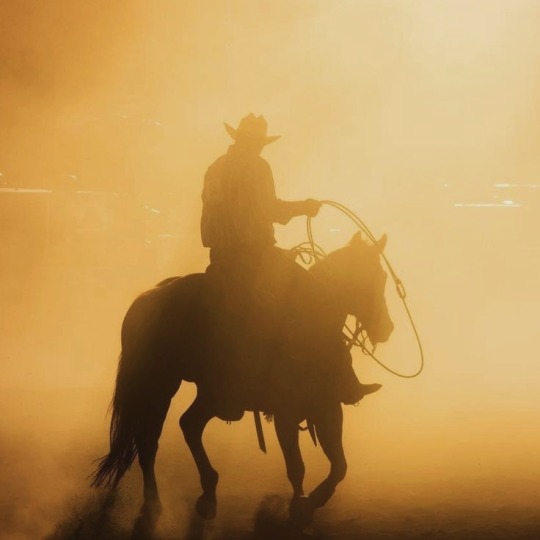
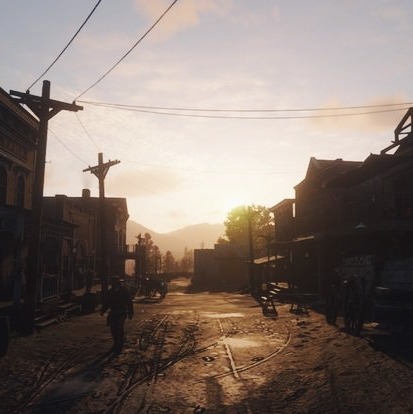
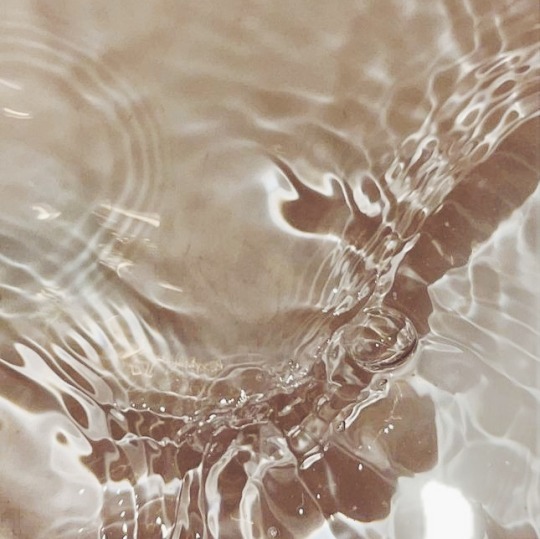
main masterlist ao3
Pairing: Arthur Morgan x f!reader
Summary: Arthur Morgan has been a thorn in your side from the moment you met him. Things come to a head when you find out he's decided to treat himself to a deluxe bath in Valentine.
Warnings: rivals to lovers, lots of bickering/banter, reader gets covered in horse shit lol, jealousy/possessiveness, vaginal fingering, brief hand job, unprotected PIV sex, creampie, fluffy fluff
Please let me know if I missed any TWs <3
WC: 7.9k
A/N: So uhhhh I did this! I have a bunch of ideas percolating for an Arthur Morgan x reader series but that's a long way off and and I couldn't get this scene out of my head. Enjoy!
You scoop a handful of cold river water to your chest, the sting of it smarting like a snakebite against your already chilled body. It washes away the last traces of lye soap, though you’re not sure what’s worse, the stink of sweat and horse dung, or the way this damn water has you shaking like a leaf. Gooseflesh blooms a constellation across your skin, a shiver coursing down your spine as the current tugs at your ankles. The sun’s trying its best, but it’s still late April, and the wind cuts through the cotton of your wet chemise like it ain’t even there.
You can just about hear Miss Grimshaw’s voice now, all iron and vinegar, barking from the top of the hill the moment you make your way back up to camp.
“You fixin’ to catch your death out there?” she’ll snap. “Or are you just plain stupid?”
Probably both, by her standards. Of course, she'd hollered at you just the same when you came slogging into camp earlier, half-covered in horse shit. You reckon she’s gonna have to choose her battles one of these days.
You’d been out hunting with Charles, trying to put some meat on the table for the rest of them sorry bastards, not that anyone seemed to notice, or care. He'd spotted a wild boar off the ridge, and you’d notched your bow in a heartbeat, drawing for a clean shot. But just as you exhaled and your fingers twitched to release the arrow, a damn squirrel went skittering across the trail, spooking your horse.
Freya’s new. Barely saddle-broke and ornery as all hell. You paid too much for her, and you knew it the moment you led her out of that stable in Valentine. But by the time she bucked you off and sent you flying into a heap of her still warm droppings, you were certain of it.
Charles, bless his soul, bit his tongue and helped you to your feet without so much as a snort. The same cannot be said for the rest of the camp. Especially not him .
Arthur Morgan.
That man’s been a burr under your saddle since the day you met, both trying to rob the same stagecoach.
You remember it like it was yesterday. Your shotgun drawn, face half-shaded by a wide-brimmed hat and red bandana pulled up over your nose, the hooves of your horse kicking up dust as you charged after the coach on the road to Emerald Ranch.
You were closing in when another rider came up fast from behind, his horse just a touch quicker, his draw just a little surer. You glanced over your shoulder and met his eyes. Cold blue, sharp as a whetted blade. You both hesitated, long enough to share a breath and a heartbeat. And then the coachman, scared stiff, dove from his seat and hit the dirt.
You didn’t think, you just moved. Leapt from your horse and landed hard on the driver’s bench, barely a second before the man vaulted up beside you.
You spent the next half-mile bickering at each other something awful, shouting over the clatter of wheels and hooves.
“I saw it first!”
“Hell you did, I pulled on the coachman!”
“Don’t matter none. I got on first!”
By the time you realized your horses were long gone and the stage had made it halfway to Emerald Ranch, it was too late to figure who won. All you knew was that you hated him then. You hate him only a little less now.
Eventually, the two of you reached a compromise, if you could even call it that. Neither of you walked away pleased. You split the money clip down the middle, argued over every last coin. The bag of jewelry you divvied up piece by piece, squinting at each item like it might whisper its value if stared at long enough. You got the short end of the stick with the ammo, but figured it wasn’t worth drawing steel over. Besides, you had your pride, and pride don’t need reloadin’.
By the time you trudged back to the spot outside Valentine where your horses were meant to be waiting, only his remained.
That goddamn, good-for-nothing, swaybacked old Thoroughbred. You could’ve screamed. Might’ve, if you weren’t so damn winded from the ride and the day and the company.
You’d spent the last hour wanting to shove his bandana into his smart mouth and shut him the hell up, but to your surprise, he didn’t ride off and leave you stranded. Could’ve. Should’ve, maybe, if he’d had any sense. But instead, Arthur Morgan looked at you all quiet-like, eyes narrowed against the setting sun, then offered his hand like it weren’t nothing.
"Need a lift?"
You didn’t answer at first. Just stared at him, all suspicious, like maybe this was some elaborate scheme to gloat from a better angle. But he didn’t push. Just waited. Eventually you took his hand, scowling all the while, and he helped you onto the back of the old mount like a gentleman might. You felt ridiculous, perched behind him, clutching his coat like some damsel, your pride hitching in your throat.
“You got someplace to be?” he asked after a while, almost reluctant.
You didn’t. Not really. Not anymore.
“I ride with a gang,” he said. “A group, more like. We move around some. You could stay a day or two, if you wanted. Won’t twist your arm.”
You’d said yes, figuring you’d stay long enough to steal something worth your trouble. Just a few days. A week, tops.
That was months ago.
Arthur Morgan had offered you a lifeline that day. But damn if he wasn’t also a splinter under your nail.
Maybe it was lingering resentment from your initial meeting, both of you too stubborn to admit who had the better claim. . Maybe it was because Dutch and the others took a liking to you faster than they did him on some days, tossing you jobs that might’ve gone his way. Maybe it was the time you dumped a bucket of freezing creek water on his head after he kept you up all night snoring like a dying grizzly the night before a risky holdup.
Or maybe it was just the way things always turned to sparks and spitfire when you were in each other’s orbit for more than five minutes.
Dutch called it friendly competition , like that explained anything.
Hosea just shook his head and muttered that y’all were worse than Sadie and Pearson. And considering Sadie once threatened to scalp Pearson with a fish knife, that said plenty.
But the real nail in the coffin came just this morning.
You came riding back into camp, soaked with sweat, your shirt covered in brown stains thanks to Freya bucking you off of her. Your hair was a frizzy mess beneath your hat, and you smelled like the inside of a stable.
You barely had a foot out of the stirrup before you heard him.
Arthur was leaned up against a barrel near the fire, sharpening his knife and grinning like the devil come to dinner.
“Well, I always knew you was full of shit,” he drawled, loud enough to draw half the camp’s attention. “Guess now I know it for sure.”
The laughter that followed echoed like a buckshot.
You were halfway off Freya, shit-streaked and murder-eyed, when Charles stepped in. One arm looped around your middle, lifting you clean off the ground before your knuckles could connect with Arthur’s smug jaw.
“Easy now,” Charles murmured. “Ain’t worth getting blood on your boots.”
You kicked and cursed, and Arthur laughed harder, but you caught the flicker in his eyes when he met yours, something resembling apologetic. Like he knew he’d crossed a line, but couldn’t help stepping over it anyway. Like maybe he liked the look on your face when you were mad, wild-eyed and burning with fire.
You suppose that’s part of the reason you’re down here in this freezing river, scrubbing away the scent of horse and humiliation from your skin, and the memory of his eyes from your mind.
But the water’s cold, the sun’s sinking low, and some things aren’t so easy to scrub out.
Not the dirt.
Not the grudges.
And sure as hell not Arthur Morgan.
✦•······················•✦•···��··················•✦
“Headin’ into Valentine,” Arthur’s voice booms across camp like a gruff church bell, startling you from the cusp of a cat nap. You jerk upright with a grunt, blinking against the brightness bleeding through the canvas of your tent. “Anyone need anythin’?”
You groan and flop back down, curling in tighter against the bedroll. The sun’s baked the canvas just enough to make the little space feel like a warm cocoon, and for a blissful second, you debate pretending you didn’t hear him.
But then, unfortunately, you catch a whiff of yourself.
You wrinkle your nose.
You’d done what you could yesterday. Scrubbed up in the river, fought a losing battle with lye soap and a patch of muddy shoreline. But nature only gets you so far. And you’re starting to smell like Freya after a long ride in the rain.
Valentine has baths. Warm ones. With those fancy, perfumed soaps Twenty-five cents for the kind of luxury that could make a girl feel halfway civilized again. That ain’t pocket change, not when you’d worked damn hard for every dollar you had. But it’s not a crime to treat yourself once in a while, is it?
At least that’s what you tell yourself as you heave a sigh and roll off your bedroll, string of curses muttered under breath as you shove your boots on.
You squint through the midday sun until you spot him, just across the way, pulling a saddle from the side of the wagon that serves as both a wall for his tent and the gang’s general dumping ground. His hat hangs low over his brow, a cigarette dangling from the corner of his mouth like he was born with it there.
“Wait up,” you call, stumbling as your foot catches in the tent flap. “I’m comin’ with ya.”
Arthur doesn’t even turn fully around, just casts a lazy glance over his shoulder and squints. “What business you got in Valentine?”
You roll your eyes and march past him, grabbing Freya’s saddle from where it’s resting near the hitching post. “I could ask you the same, Mr. Morgan.”
“I asked first,” he replies, that damn smirk already tugging at the corner of his mouth like it’s got a life of its own.
“If you must know, I’m in dire need of a hot bath.” You toss the saddle onto Freya’s back with a dramatic huff. “Some of us like to smell better than Pearson’s two-day-old possum stew once in a while. Not that you’d know anything about that.”
Arthur snorts, adjusting the cinch on his own saddle. “Is that what this is about? You ridin’ all the way into town just to waste money on soap and water?”
You pause to glare at him over Freya’s back. “I ain’t wastin’ it. I’m investin’ in public health.”
“Uh huh.” He squints at you, cocking his head. “Or maybe you’re plannin’ to go courtin’ some poor soul in Valentine. That it?”
“Maybe I am. Maybe I ain’t.” You adjust your hat and shoot him a grin that’s all teeth. “Why? You jealous?”
Arthur barks out a laugh, short and sharp. “Of the poor bastard dumb enough to fall for a lady such as yourself?” He pauses. “Assuming I can even call you a lady.”
You haul yourself into the saddle with a grunt, lean forward, and scratch Freya’s ears. “Just for that, Arthur Morgan, I’ll replace your soap with a bar of caked horse shit. See if you even notice the difference.”
He swings up onto his horse with the ease of a man who’s done it a thousand times, shaking his head. “You try that, and I’ll throw you in the river myself. Clothes and all.”
You click your tongue and nudge Freya forward, falling into pace beside him as the two of you ride out of camp. “You’d miss me the moment I was gone,” you say, voice light.
“Don’t flatter yourself,” he drawls, but there’s no bite to it. In fact, that shit-eating grin’s been plastered on his face since the moment you came scrambling out of your tent.
You glance sideways at him, watching the way he shakes his head and laughs to himself like he don’t quite know what to make of you half the time. If you had to guess, you might be so bold as to say Arthur Morgan enjoys your company just as much as it irritates him.
And if you had a little whiskey in your belly and the moon was high, you might even admit you feel the same.
✦•······················•✦•······················•✦
The ride into Valentine is as dusty, loud, and as unpleasant as the town itself. Chickens squawk. Mud squelches under wagon wheels. Some poor bastard’s getting screamed at by his wife outside the general store. The whole place smells like manure and moonshine and cheap tobacco.
Arthur reins in his horse outside the hotel and spits into the dirt, scanning the street like he’s already regretting bringing you along.
“Well,” he mutters, climbing down from his saddle. “Here we are. The height of civilization.”
You dismount Freya and toss her reins over the hitching post. “Astute observation, Morgan. Next thing I know, you’ll be makin’ sketches of the saloon piss bucket in that journal of yours.”
He gives you a sidelong look, lip twitching. “Only if you’re the one cleanin’ it out.”
You hum as you dust your trousers off. “Lovely. Maybe I will find someone better suited to my delicate nature while I’m in there.” You gesture toward the hotel. “Someone who smells less like cigarettes and horse sweat.”
Arthur snorts. “Best of luck to you. Now go get your damn bath before you scare the locals off.”
You’re halfway up the hotel steps when you pause, glancing back at him. He’s lighting another cigarette, already looking like he’s halfway to leaving you behind.
“You sure you don’t need a bath yourself?”
“Nah,” he says, taking a drag. “Got a few things to take care of. Heard about a bounty at the Sheriff's. Might visit the gunsmith, maybe the post office.”
You raise a brow. “You writin’ letters now? That’s sweet. Didn’t know you had a pen pal.”
He grins around his cigarette. “You’re a real pain in the ass, you know that?”
You lean one hip against a porch post and shrug, a smug little smile curling your lips. “And yet you keep lettin’ me accompany you places. Kinda gives the impression you enjoy it.”
Arthur flicks his ash into the dirt and shakes his head, chuckling low under his breath. “Get in there, trouble.”
You tip your hat at him and push the door open, letting it swing shut behind you. The wood creaks under your boots as you cross the lobby, already imagining the feel of hot water and real soap, not the lye-smelling, skin-flaying blocks you’ve been stuck with as of late.
Still, as the hotel clerk hands you a key and points you toward the baths, you find yourself glancing back through the dusty window.
Arthur’s still outside. Still watching.
And when he catches you looking, he tips his hat just so.
Damn him.
You disappear down the hall before he can see you smile.
✦•······················•✦•······················•✦
This bath is worth every damn cent.
You sink into the water with a hiss, the heat prickling at your skin before settling into something delicious and divine. Your head falls back against the smooth curve of the deep tub, and you let your eyes flutter shut. The smell of campfire smoke and horse sweat linger in your hair, but now the sweet scent of rose and jasmine override them.
It’s quiet here. Too quiet, maybe. Without the constant chaos of living in a camp with twenty-odd other people. Without Arthur's gruff drawl, the barbs he throws your way any chance he gets.
You’d never admit it aloud, not even with a pistol to your head, but you’d spent most of the ride into town studying him. The way his shoulders moved when he rode, one arm slung back like second nature. How his forearms flexed when he adjusted the reins. That deep, lazy drawl of his when he leaned forward on his horse, whispering kindnesses to her.
That’s my girl.
It’s infuriating. The way he can be so damn irritating one moment and then have the gall to go and make flutters erupt in your belly like that.
You huff and dunk your head under the water, the heat blooming against your cheeks, muffling everything. When you resurface, hair slicked back and dripping, you reach for the bar of perfumed soap and lather up your arms.
You scrub harder than you need to.
Arthur Morgan. Thorn in your side, pain in your ass. And yet, somehow, unavoidable. Unignorable. He drives you up the wall but half the time you’d rather he pin you against it.
You shake your head, water flinging from your hair in fat droplets, and mutter under your breath. Get a hold of yourself.
Because it’s just a bath. Just a hot soak and some soap. You’re acting like it’s boiling you til you’re soft, all because the man has nice arms and talks to his horse the way you’d like him to talk to you.
You sink a little deeper, until the water brushes your chin.
… Still, you wonder what he’s doing now.
Probably leaned against the saloon bar, nursing a glass of whiskey, charming some barmaid with that half-smile he thinks makes him irresistible.
That thought shoots irritation through you.
You shouldn’t care.
But you do.
You sigh and let yourself sink again, only this time, it’s not to escape the heat. It’s to escape the thought of Arthur Morgan and the way he makes you feel like you're always one step away from either throttling him or kissing him.
The water cools quicker than you’d like, the heat leeching away in slow degrees until you’re forced to admit defeat. With a groan, you climb from the tub, water sluicing off your skin, and wrap yourself in a linen towel that’s coarser than you’d prefer but does the job just fine. You scrub yourself dry, watching the bathwater swirl in lazy circles, now a cloudy shade of brown.
“Twenty-five cents well spent,” you mutter to yourself, smirking as you step back into your clothes. Clean skin under worn fabric is a small luxury in this life, where comforts are few and far between.
You take your time on your way out, fingers trailing along the wood panelling, relishing the way the wooden floor doesn’t kick up dirt beneath your boots like the camp’s packed dirt ground always does. At the front desk, you offer a quiet thank-you to the clerk, prepared to wander the main street of Valentine in search of Arthur, maybe needle him some more if he’s still loitering near the general store.
But then the man behind the desk stops you with a polite smile.
“Oh, if you’re looking for the fella you came in with, he just went in for a bath himself.”
You blink.
And then stare at him like he just told you he had a live rattlesnake wearing a top hat under the desk.
Arthur Morgan? Paying for a hot bath? After all that teasing? All that ribbing about you getting dolled up for some suitor in town? You’d half expected to find him outside rolling around in horse dung just out of spite.
Before you can gather a proper retort, or perhaps go storming down the hallway to wring his smug neck, a soft creak on the stairs turns your head.
She appears like a mirage in the desert.
Rouge on her cheeks, hair curled and piled high, her corset cinched tight enough to give a man ideas. Her chemise hangs off one shoulder, strap slipping in a way that seems both accidental and entirely intentional. She’s soft and sultry, gliding down the stairs like an apparition.
Your mouth goes dry.
The desk clerk straightens a bit, his tone easy. “Hattie. Gentleman in room two. Deluxe.”
She smiles, slow and syrupy, a curl of smoke practically floating in her wake. “Let me have a quick smoke,” she purrs, glancing at you with a wink sharp enough to cut glass. “Then I’ll be right in.”
She turns on her heel and saunters toward the hallway, hips swaying with practiced ease.
You're rooted to the floor.
Your thoughts, however, go flying.
That rotten, no-good, two-faced son of a bitch.
After all that grief, after the wisecracks and smirks, the whole you plannin’ to go courtin’? nonsense, he turns right around and orders himself a deluxe bath with a woman like that waiting on him?
The sheer audacity.
Your ears burn so hot they might catch fire, and you barely register the front desk clerk blinking at you, a little wary now.
“Miss? You all right?”
“No!” you snap, sharper than a pistol crack. “No, I am not .”
And with that, you storm outside, the door slapping shut behind you as you step into the dust and heat of the street, fury rising like smoke from scorched earth.
Arthur Morgan is about to get his damn comeuppance.
You don’t pause to think, don’t stop to weigh propriety or pride. You just follow the scent of tobacco like a bloodhound on the trail, stomping down the narrow alleyway between the hotel and the bank, jaw clenched tight.
And there she is.
Hattie leans against the frame of the hotel’s back door, a cigarette perched daintily between two fingers, lips pursed around it as she puffs. She’s got the look of a woman who’s seen too much and lets even less surprise her, but she startles when she sees you approach..
You draw in a breath, tempering the fury that wants to lash out in all directions. It ain’t her fault she’s the kind of woman men pay to have bathe them.. It ain’t her fault men pay for warmth and softness in bathwater and bed alike. And it sure as hell ain��t her fault that today, of all damn days, Arthur Morgan just so happens to be her customer.
“Hattie,” you say like you’ve known her all your life, your tone smooth as whiskey left too long in the sun. “Enjoyin’ your cigarette?”
She straightens a bit, eyes scanning behind you as though there must be someone else you're talking to.
Then she catches the pistol on your hip, the pants in lieu of a skirt, the storm in your eyes.
“Miss, please,” she says, lifting one hand defensively, “I don’t want no trouble.”
You blink, realizing what she sees. What you must look like right now. Mad enough to spit nails, armed, wild-eyed.
“Oh, Lord no,” you say quickly, raising both hands in mock surrender. “Ain’t here to rob you.”
She softens only a little, still eyeing you like you might go feral at any second. “Alright then… what are you here for?”
You reach into your satchel, fingers brushing over flint, bullets, an old piece of jerky, until you finally fish out your coin purse.
“What’s a deluxe bath cost these days? Extra twenty-five cents?”
“Fifty,” she says, flat as a skillet.
“Good God,” you mutter under your breath, grimacing as you tug the purse open. She shoots you a look. “Not that you ain’t… Not that your services ain’t worth that much.”
She smirks at that.
You hold out a shiny silver dollar, letting it catch the sun between your fingers. “I’ll give you this if you let me go in that room instead. Room two, with the gentleman.”
She cocks her head, narrowing her eyes. “You plannin’ on robbin’ him ?”
You sigh. Lord, you almost wish that were the case. Would be easier than the truth.
“Somethin’ like that.”
She takes one long drag, ash glowing bright, and watches you as she exhales slow and thoughtful. Then she leans forward and plucks the coin from your fingers like she’s done it a thousand times before.
“Second door on the right,” she says, tucking the dollar into her bodice. “Don’t make too much noise, ‘less you want the fella at the front desk pokin’ his nose in.”
You nod, one foot already inside the threshold. “You’re a good woman, Hattie.”
“And you’re a strange one,” she calls after you, her chuckle trailing smoke.
You move through the corridor like a ghost, boots soundless on the wood, heart pounding louder than it ought to. The door looms before you, seeming larger now. Steam curls from beneath it, thick with the fragrant smell of rose and jasmine.
You raise your hand to knock, affecting your best, most sultry voice. “Need some help in there?”
A pause.
Then that voice, deep and unmistakably Arthur. “Come in.”
You turn the knob and step inside.
Steam fills the room like fog on a mountain pass, the glow of a small oil lamp, casting everything in a dim amber haze.
Truth be told, you didn’t have much of a plan. You’d stormed in here thinking about tossing a bucket of ice water in the tub or maybe snatching his clothes and leaving him to drip-dry in shame. But those half-formed ideas vanish the second your eyes land on him.
Because there, sunk low in the tub, arms sprawled along either side like a goddamn painting, is Arthur Morgan.
His head is tilted back, hair slicked down, eyes closed. He looks peaceful more serene than you’ve ever seen him. And damn it, he’s glowing . Skin golden and wet, a few scattered droplets clinging to the scruff on his jaw. You stare. You forget to be angry. You forget how to breathe.
Then his eyes open.
He blinks once, slow, and sits up just a bit. Water laps at his chest.
“What in the hell…”
And just like that, the fire under your ass lights right back up.
“Arthur Morgan, you are a damn liar,” you snap, stepping fully into the room and letting the door shut with a click behind you. “Told me you didn’t want a bath, but that ain’t what I’m seein’.”
He looks at you like you’ve grown a second head. “What’re you…”
“A deluxe bath, no less! That what brought you to Valentine? Didn’t want me gettin’ one ‘cause you didn’t wanna be caught playin’ cozy with some saloon girl?”
He tuts, jaw already tightening. “Now, how the hell’d you — ”
“I was there , Arthur! Stood right there when she got the order. Gave her a damn dollar to scram.”
That shuts him up. For a beat, anyway. Then his jaw works, and for a second, you think he might smile.
He leans back against the porcelain, eyes tracking over you slow. There’s a glint in them now, not teasing, exactly. It’s warmer than that, more curious. He’s not mad you’re here, just trying to parse why exactly.
“Well,” he says at last, drawl thick with steam, “you gonna stand there accusin’ me, or you plannin’ on helpin’ me wash?”
Your breath catches.
The steam clings to your skin, beads at your collarbone. Your shirt's damp at the edges, clinging to your arms. You should turn around. You should . But your feet don’t move.
But there he is, reclining in the tub like some damn river god, lips parted slightly, water beading along the muscled curve of his shoulders, sea blue eyes fixed on you. There was challenge in his voice, sure, but there was something softer too.
“I’d like to get my money’s worth,” he says, softer now. “Reckon you would too.”
As if possessed by the steam and the knowledge that he is naked beneath the cloudy water, you cross the room and kneel beside him.
He shifts, sitting forward just a bit. “Could use a hand with my back.”
And damn you if your heart doesn’t do a little flutter at that.
You reach for the cloth perched on the rim of the tub. Dip it into the water. Your fingers brush the edge of his shoulder as you begin to wash, and you feel it, that sharp little inhale he tries to hide. The tension under his skin.
Warm water runs down the ridges of his back, over scars and sun darkened skin. He exhales, head dropping forward, and for a moment it feels like the world gets very still.
“I didn’t… I didn’t rightly know what I was doin’,” you admit, voice small now, honest. “Just knew I was mad. Came up here all fired up, ready to start somethin’. And then I saw you sittin’ here, lookin’ like that, and…”
You trail off, cloth pausing over his spine.
He turns his head, gaze catching yours. “And?”
You swallow. “And I didn’t want some other woman’s hands on you.”
The shift is instant. His whole expression changes. Softens. Like he’d been waiting for you to say it.
“Yeah,” he murmurs. “Maybe I don’t want that either.”
You scoff, but it comes out breathless. “Right. You paid extra for a deluxe bath ‘cause you didn’t want a woman touchin’ you. Makes perfect sense.”
His gaze flickers away. “I… hurt my back. Been tough reachin’ everything. Wanted to make sure it was done right.”
“Oh.” The irritation slips through your fingers like bathwater.
“Just wanted to smell nice, you know.”
“For who?” you ask, meaning it to sound playful, but it slips out softer than you intended. Barely a tease at all. “Plannin’ on courtin’ someone?”
He doesn’t look at you. Doesn’t speak for a long beat.
“For you. Wanted to smell nice for you.”
Your chest tightens. A slow, hot ache unfurls deep in your ribs.
You reach out before you even know you’re doing it, brushing damp hair back from his temple. He turns into your touch, eyes fluttering closed.
“I think about you all the time, Arthur,” you whisper. “More than I ought to.”
His eyes open. He searches your face, like he’s waiting for you to take it back.
But you don’t.
“Join me?” he asks, the words a little rough at the edges.
The hot ache in your ribs dives down to your core.
You could make a joke. Could throw up that wall again, tease him about not wanting to dirty yourself soaking in his dirty water. But none of that feels right now, not here, not with him looking at you like that. Like you hung the moon.
You rise slowly, taking a step back from the tub. Your hands go to the buttons of your shirt, and though they tremble, you don’t stop. One by one, you undo them, each one a step closer to something you’ve only let yourself imagine in the quiet of night.
Arthur bows his head, eyes shut tight like if he doesn’t look, he can keep control of himself.
“You don’t have to look away,” you say softly. “I… I want you to look.”
His eyes open, and what you see there undoes you. Like he’s looking at something sacred.
When you slip your trousers off, you swear the air gets thicker. Your chemise clings to your skin, damp from the heat, and when you finally slide it off, there’s nothing between you and him but the steamy distance across the floor.
Bare in body and soul.
You step toward the tub. The water laps at your ankles first, hot and silken, and then you ease down slowly, legs folding to the side so you’re facing him. The tub is small, and your knees touch beneath the water. The heat of him seeps into you like sunlight through your canvas tent.
He doesn’t move, doesn’t make a sound, just watches you. He looks at you like he’s never seen you before. Like he can’t quite believe you’re real. His gaze moves slow, respectful, reverent.
Then he lifts a hand, wet and trembling, and cups your cheek with such tenderness it breaks something loose inside you. His thumb sweeps across your cheekbone, slow and reverent.
“Let me wash you, too,” he says thickly.
You huff a quiet breath, a smile tugging at your lips. “I just had a bath, Arthur.”
“I know,” he says, barely above a whisper. “Ain’t about gettin’ clean.”
You nod once. “I’m yours.”
You know Arthur is not used to being given things without a fight. Not used to things being his. But you figure you’ve given him enough hell at this point. And maybe you’ve been his this whole time, since the day you laid eyes on him from across that damn stagecoach.
Arthur shifts forward a little, the water sloshing gently around you. His hand slides from your cheek down to the curve of your jaw, then to your neck. His touch is careful, deliberate, like he’s memorizing you one inch at a time.
“You sure?” he asks all low, like gravel soaked in honey.
“I wouldn’t be here if I wasn’t,” you murmur.
He reaches for the washcloth, soaking it in the warm water and wringing it out slowly. You watch the way his hands move so gently, those rough and capable hands you’ve spent so long admiring wrapped around guns and knives and ropes.The way his chest rises and falls. It stirs something deep and aching in you.
He presses the cloth to your collarbone, dragging it gently across your skin. The heat of it makes you shiver, and his eyes flick to yours, gauging your reaction.
You don’t look away.
He trails the cloth over your shoulder, down the line of your arm, the curve of your elbow. When he reaches your wrist, he turns your hand over and kisses the inside of it, soft and slow.
“I ain’t ever done this before,” he admits. “Not like this. Not slow.”
You let your head tilt, watching him. “Then take your time.”
He does.
The cloth moves down your chest, careful, reverent. He doesn’t rush, not even when your breath hitches as he grazes the side of your breast. His hand lingers, trembling just a little, and his thumb moves over to graze across your nipple. You lean into his touch, soft peak pebbling under the pad of this thumb, and into the space between you that’s growing warmer with every breath.
“You’re beautiful,” he murmurs, voice thick with wonder. “More than I can make sense of.”
He dips the cloth again and brings it to your thigh, dragging it slowly upward. Your legs shift in the water, parting, an invitation unspoken but clear. His hand stills just above your knee, and he looks up at you, gaze searching.
“Can I?” he asks.
You nod, voice hardly a rasp. “Please.”
He slides the cloth higher, over your thigh, up the tender inside of it, so slow it makes you ache. You can’t hold back the soft sound that slips from your lips, and his jaw tightens like he’s holding himself back, like he’s barely hanging on.
The cloth slips away, forgotten. He drops it over the edge of the tub, and both hands find your waist, drawing you gently toward him. The water shifts around you as you settle into his lap, straddling him, bare skin against bare skin beneath the surface. He’s warm everywhere, solid, a wall of hard-earned corded muscle beneath you.
You feel him, hard and hot beneath the water, but he doesn’t push. Doesn’t grind against you or ask for more. He just holds you there, like this is enough. Like you are enough.
Your hands rise to his face, brushing the wet hair back again. “Arthur…”
He leans in, forehead pressing to yours. “You don’t gotta say nothin’. Just want to touch you. Feel you.”
But you want to say it.
“I’ve wanted this for so long,” you whisper. “Wanted you. ”
His breath shudders against your mouth, and then he kisses you.
Arthur Morgan is an outlaw, but when he presses his mouth to yours, you are certain he has only ever known tenderness. You are certain you have only ever known this feeling, of his body entangled with yours in a steaming bath, of being lulled into unreality by steam and the way he touches you.
It’s not hurried. It’s not rough. It’s deep, slow, devastating in the way it unravels you. His lips are soft, tasting of heat and longing. His hands grip your waist like he’s anchoring himself to this moment, like if he lets go, he’ll drown.
You deepen the kiss, one hand slipping to the nape of his neck, the other drifting down, skimming over the swell of his chest. He groans low in his throat, a sound that vibrates through you, and his mouth moves to your jaw, your throat, kissing a line down to your collarbone. Then he’s pulling a nipple into his mouth, suckling gently before turning to give his attention to the other.
“I could die happy right now,” he breathes against your chest, pressing kisses there.
“You’re not gonna die,” you murmur, threading your fingers through his hair. “Not tonight.”
Arthur’s mouth continues to lather both breasts in open mouthed kisses, warm breath ghosting over your skin, and you arch into him, your body asking for more even before your mind catches up.
He groans again, quiet and rough, as if your reaction undoes him.
One of his hands skims up your back, broad and calloused, fingers spreading wide as he holds you close. The other trails lower, slow and steady beneath the waterline, tracing the curve of your hip. His palm slides over the swell of your thigh, and then inward, the pad of his thumb brushing just shy of where you ache for him most.
You gasp softly, breath hitching against his cheek. He stills, giving you space, giving you the chance to stop this, but you don’t want to stop. You need him to keep going.
You tilt your hips up in answer, pressing closer, your mouth brushing his ear. “Please, Arthur.”
That word, please , shatters whatever restraint he was clinging to.
His hand slides between your thighs, fingers tentative at first, but guided by your sharp inhale, your body’s silent instructions. He finds you slick, warm, already undone just from being close to him. His mouth finds yours again as he strokes you, slow and patient, like he’s learning every inch of you. Like he wants to remember exactly how to make you come undone so he can do it again and again.
He gathers your wetness on his thumb and guides it up to your clit, rubbing slow and gentle circles. His thick middle finger teases at your entrance, and he pulls back to look you in the eyes as he pushes in. You pout at the intrusion, a low whine escaping your lips. He pumps you a few times before adding another finger, and that’s when he knows he’s hit the sweet spot.
Your head falls to his shoulder, fingers digging into his back as he fucks you on his fingers. The water laps around you both, soft and rhythmic, masking the sounds of your breaths turning ragged, your gasps swallowed into the curve of his neck.
“You feel so good,” he mutters, heavy with awe. “So damn good…”
“Arthur,” you whine into his ear, his name never sounding so pure and yet so filthy. “Don’t stop, please.”
The pressure builds in you quickly, quicker than it ever has when you do this yourself, and in seconds you’re falling over the edge, fingers digging into his back, his name falling from your lips amid a string of muttered curses.
He pulls you back to look at you coming down, admiring his handiwork. He’d look smug if he weren’t so desirous, if his cock wasn’t painfully hard and resting inches from your still fluttering cunt.
Sensing this, you shift in his lap, seeking more of him, the heat between you almost unbearable now. His fingers still at your hip, holding you steady as you guide your hand between your bodies and wrap it around him, thick, hard, pulsing with need.
Arthur’s whole body shudders. His head drops back, jaw tight, like he’s trying to keep from losing it right then and there.
“You’re killin’ me, darlin’,” he rasps.
“Then don’t wait,” you whisper. “I don’t want gentle. I want you. All of you.”
He grits his teeth, his hands finding your waist again, gripping tight as he positions himself. You rise up a little, just enough to line yourself up, and then you sink down, slowly, inch by inch, until he’s seated deep inside you.
A broken sound, your name, slips from his throat, part growl, part prayer, and your head falls forward to rest against his, both of you shivering in the aftermath of your bodies connecting at the root.
He fills you perfectly. The stretch burns deliciously, your bodies slotting together like they were always meant to. Like maybe this was written somewhere in the stars long before you ever crossed paths.
You begin to move first, slow, rocking your hips gently, savoring every drag of friction, every pulse of pleasure that builds in your core. Arthur’s hands roam everywhere, your back, your hips, your breasts, like he can’t decide where to settle because it’s all too much, too good, too real .
His mouth is everywhere too. Your tits, your neck, your shoulder, the curve of your jaw. He murmurs things you can barely make out between gasps.
So beautiful, can’t believe you’re mine, I got you, I got you.
You find a rhythm, the water sloshing gently with each movement, and your bodies fall into a perfect, desperate cadence, like a prayer whispered back and forth, over and over.
When it starts to crest, when the pressure builds and coils tight, you bury your face in his neck, your moan muffled against his skin.
You feel it again, that pressure in your core, the pull that drags you into ecstasy. His cock seated so deep inside you, his mouth lapping at your sensitive nipples, his fingers exploring every inch of you like he can’t possibly have enough of you flooding all of his senses.
He feels it. Feels the way your walls flutter around him, the way your movements stutter. “That’s it,” he groans, hands gripping your hips harder, driving into you deeper now, chasing the edge right behind you. “Come for me, sweetheart. Let me feel you.”
And you do.
It hits like a wave, sharp, sweet, overwhelming. Your body clenches around him, pleasure sparking down your spine as you cry out his name. He follows a breath later, hips jerking, breath caught in his throat as he spills into you, hands trembling against your skin.
For a long moment, all you can do is breathe. The world narrows to the quiet splash of water and the warm weight of his forehead against yours.
Then Arthur lifts a hand to your face again, brushing his knuckles along your cheek.
“You alright?” he asks.
You nod, a dazed little smile curling your lips. “Better than alright.”
He kisses you, slow and deep again, a promise sealed with steam and sweat.
✦•······················•✦•······················•✦
You both linger in the tub longer than any paying customer probably ought to.
The water's gone tepid, but neither of you seem to mind. Your fingers trail idle circles across his chest, the rise and fall of his breathing soothing beneath your palm. His nose brushes yours now and again, lazy little kisses shared between soft smiles.
Eventually, you shift, your legs tangling with his as you rest your chin atop his shoulder. “If we go back to camp now,” you murmur, all low and drowsy. “We'll wake everyone up ridin’ in.”
Arthur lets out a soft grunt of agreement, nuzzling into your hair before pressing a kiss to your temple. “Then we’ll keep ‘em up all night, too.”
You lift your head, feigning a scandalized gasp. “Arthur Morgan!”
“What?” he says, completely unbothered, though the crooked little grin tugging at his mouth gives him away. “You think I’m lettin’ you crawl back into your tent after that?”
You shake your head, hiding your smile. “What’ll the others say?”
“Don’t much care,” he says, sitting up, groaning as he stretches. “Think we earned a real bed tonight, though. What do you think?”
He climbs out first, grabbing a towel and then another, insisting on drying you off himself, all slow and careful. You dress in his flannel shirt draped over your shoulders, the hem brushing your thighs. Your chemise’s neckline peeks out where you didn’t bother buttoning all the way, your hair still dripping down your back..
You slip out into the hall together, Arthur’s hand low on your back, guiding you toward the front desk. The clerk is still there, chewing on a toothpick and flipping lazily through a tattered newspaper. He glances up as you approach and blinks.
Arthur clears his throat. “We’ll take a room. Just for the night.”
The clerk squints. “Weren’t you just in there for the deluxe bath?”
“Was,” Arthur says evenly. “Now I’m payin’ for a bed.”
The man frowns, glancing toward the back. “Where’s Hattie?”
Arthur raises a brow. “Didn’t need her, turns out.”
The clerk looks between the two of you, taking in the damp hair, the loosely buttoned clothes, the unmistakable glow of two people who just did a whole lot more than bathe. His cheeks redden and he hands over the key without a word.
You make it halfway up the stairs before you bite back a grin.
“So,” you murmur, tossing a glance over your shoulder at Arthur. “How’d you enjoy your deluxe bath?”
He smirks, deadpan. “Bit underwhelmin’. Tub was too small. No champagne. Woman wouldn’t stop talkin’.”
You laugh, bumping your shoulder against his as he catches up to you at the top of the stairs.
“Well at least you didn’t have to share it with a cowboy who dirtied your bathwater” you ask, playing along. “Maybe I’d have preferred your woman, seems awful sweet.”
“She was.” He pauses at the door, unlocking it. “Still talkin’ though.”
You scoff as he opens the door for you, stepping inside. “Ass.”
“Your ass,” he shoots back, swatting at your backside as he ushers you inside.
You don’t even make it under the covers before he’s got you in his arms again, falling back into the mattress with a satisfied grunt, taking you right along with him. You’re laughing as he pins you beneath him, one knee nudging your thigh as he brushes your hair off your face.
His gaze flickers lower, down to your collarbone. He dips his head there, pressing a kiss to the hollow of your throat, then inhales deep like he’s savoring you.
“You smell good,” he mutters against your skin.
You giggle. “Better than horse shit?”
He grins into your neck. “Oh, by miles.”
Then he nips playfully at your collarbone. “Still might have to take you back for another bath tomorrow. Just to be sure.”
You wrap your arms around his neck, tugging him closer with a teasing hum. “Well, if that’s the case… I suppose we better go for the deluxe again.”
And from the way he grins down at you, you’re certain he’s already plannin’ on it.
#arthur morgan smut#arthur morgan#arthur morgan x reader#arthur morgan x you#arthur morgan x female reader#arthur morgan rdr2#arthur morgan red dead redemption 2#arthur morgan fanfiction#arthur morgan fluff#fanfiction#fanfic#rdr2#red dead redemption 2#red dead redemption fanfiction
286 notes
·
View notes